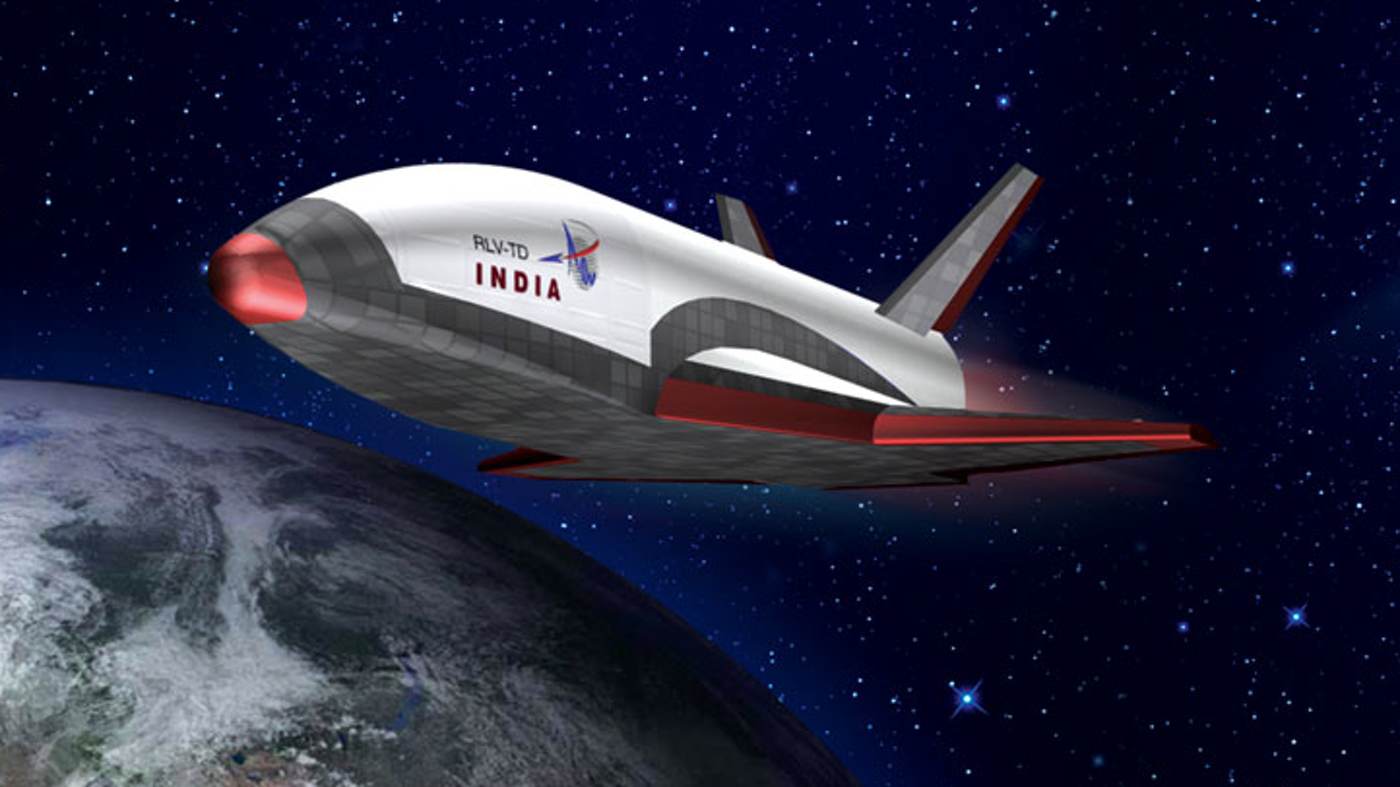I have blogged in the past about India's space program. They are a minor player in the international space race but they have made impressive progress including sending a satellite to Mars. They are also working on a reusable space launch vehicle.
The Indian Space Research Organization (ISRO) has been working on the Reusable Launch Vehicle-Technology Demonstrator (RLV-TD) spaceplane. The unmanned suborbital spaceplane is similar to the U.S. Air Force's X-37B. The RLV-TD is a winged craft that is designed to test flight and propulsions systems. Hypersonic flight experiments (HEX), landing experiments (LEX), return flight experiments (REX) and scramjet propulsion experiments (SPEX) will be tested in a series of flights on the RLV-TD. The RLV-TD is powered by an air-breathing scramjet which is under development. These tests are hoped to prove that the twelve ton vehicle can safely reach five times the speed of sound, reenter the atmosphere and land with its onboard computer.
It will be launched aboard a conventional solid fuel rocket booster which will accelerate the RLV-TD to over six thousand miles per hour. Following separation from the booster, the craft will rise to an altitude of six two miles before returning to Earth. Although the intent is to develop a craft that is capable of landing on a runway, the first test flights will splash down in the Bay of Bengal because India does not have any runways that are the required three miles length. The construction of a three mile runway is being planned for future landings. The RLV-TD was scheduled to be launched on a test flight in February but technical difficulties may push the test date back to sometime in early April.
The RLV-TD is a scaled down prototype of planned India's Avatar spacecraft. Flight and propulsions systems will be thoroughly tested on the RLV-TD before the full scale Avatar craft is built. The Avatar is being designed to reduce launch costs to ten percent of current cost. The Director of ISRO's Vikram Sarabhai Space Centre says that in order to have a reusable space craft, the propellant has to be about ninety eight percent of the weight and the craft about two percent of the weight. Currently, the spacecraft being launched may be up to ten percent of the weight of the vehicle and they cannot be recovered and reused. If the RLV-TD can be successfully used to develop the technology to construct the Avatar, India will have a reusable launch vehicle and greatly reduced launch costs.
The Indian Minister of State said " “Development of RLV is a technical challenge and it involves development of cutting edge technologies. The magnitude of cost reduction depends on development and realization of fully reusable launch vehicle and its degree of reusability." With the successful development of the Avatar spacecraft, India will be able to compete in the lucrative market for satellite launches for nations that do not have their own space programs.
Artist's concept of the RLV-TD:
Credit: Indian Space Research Organization
